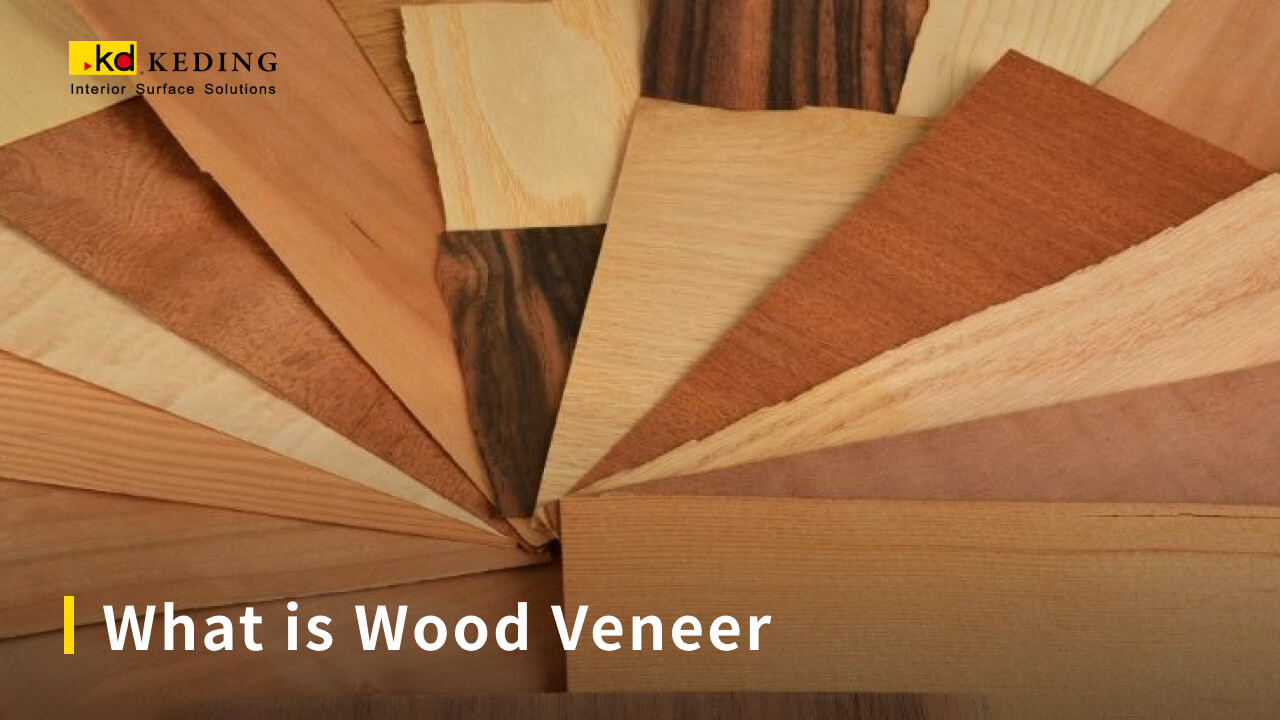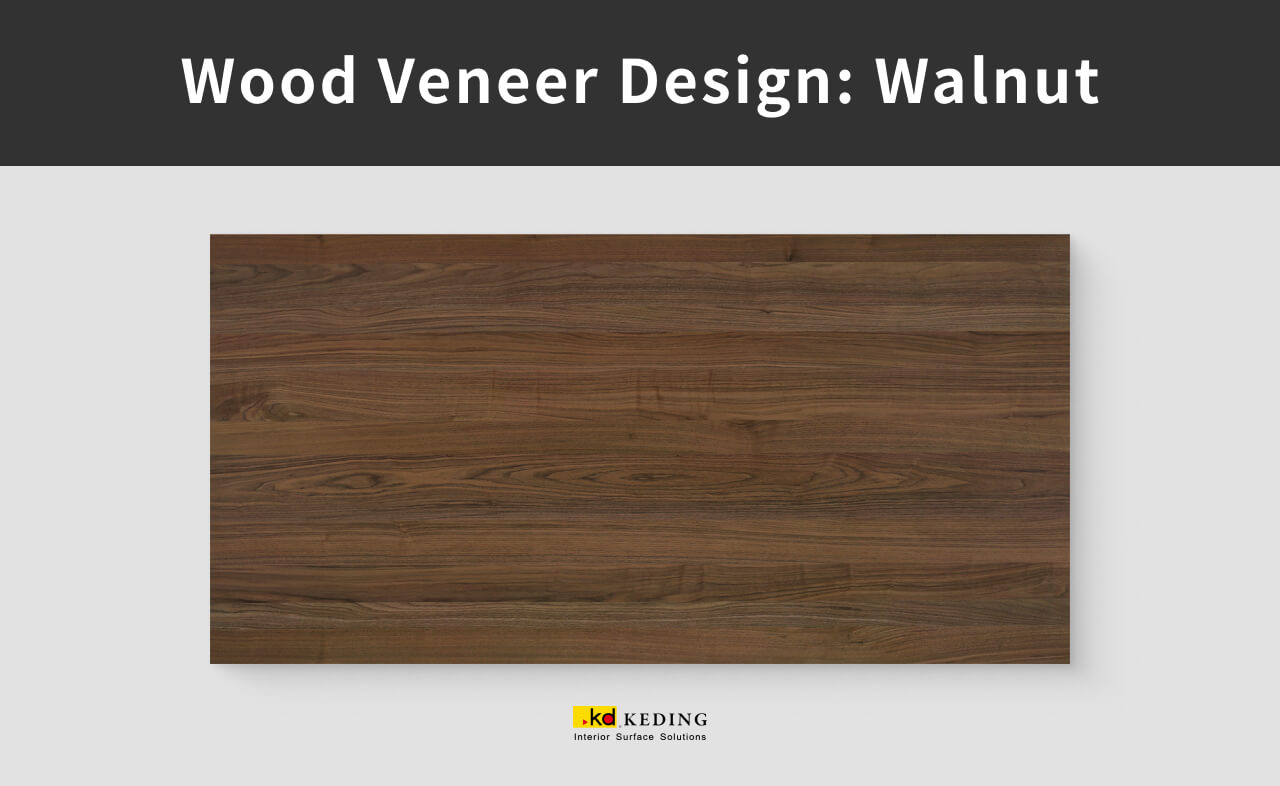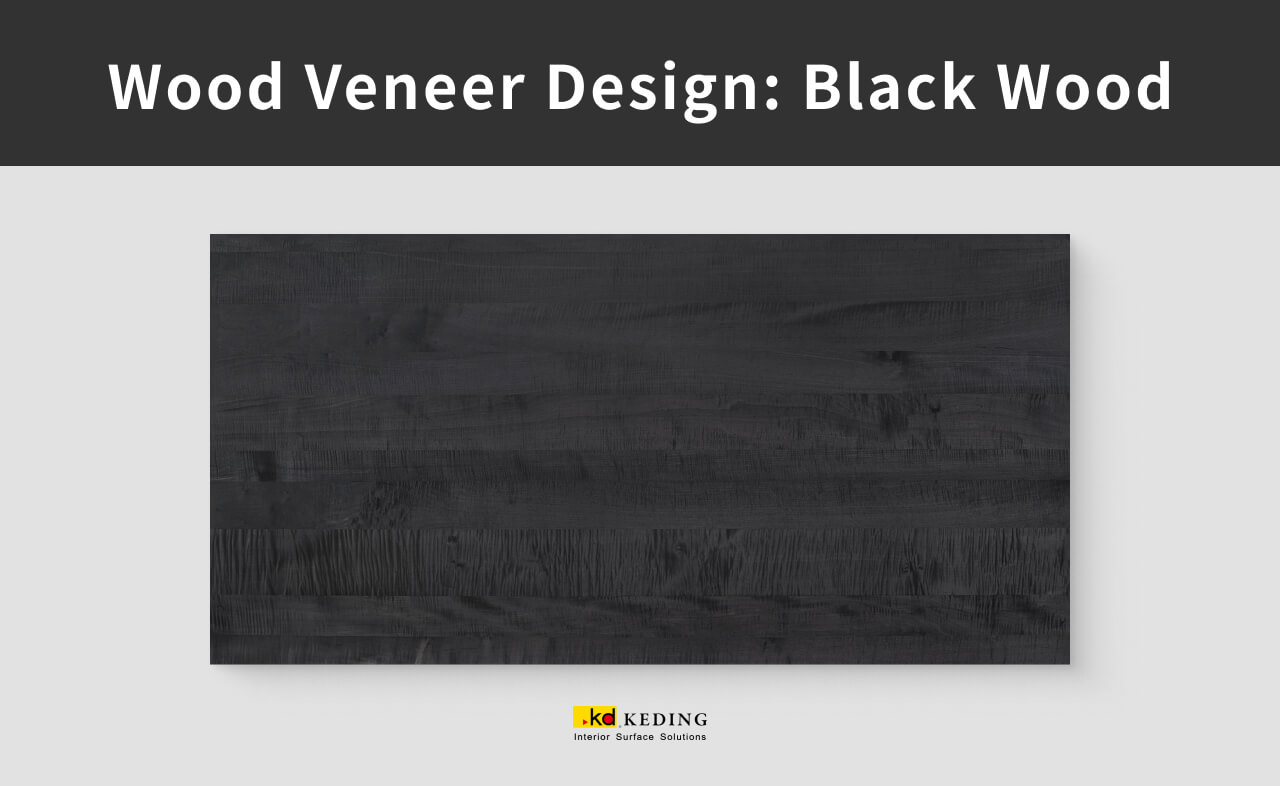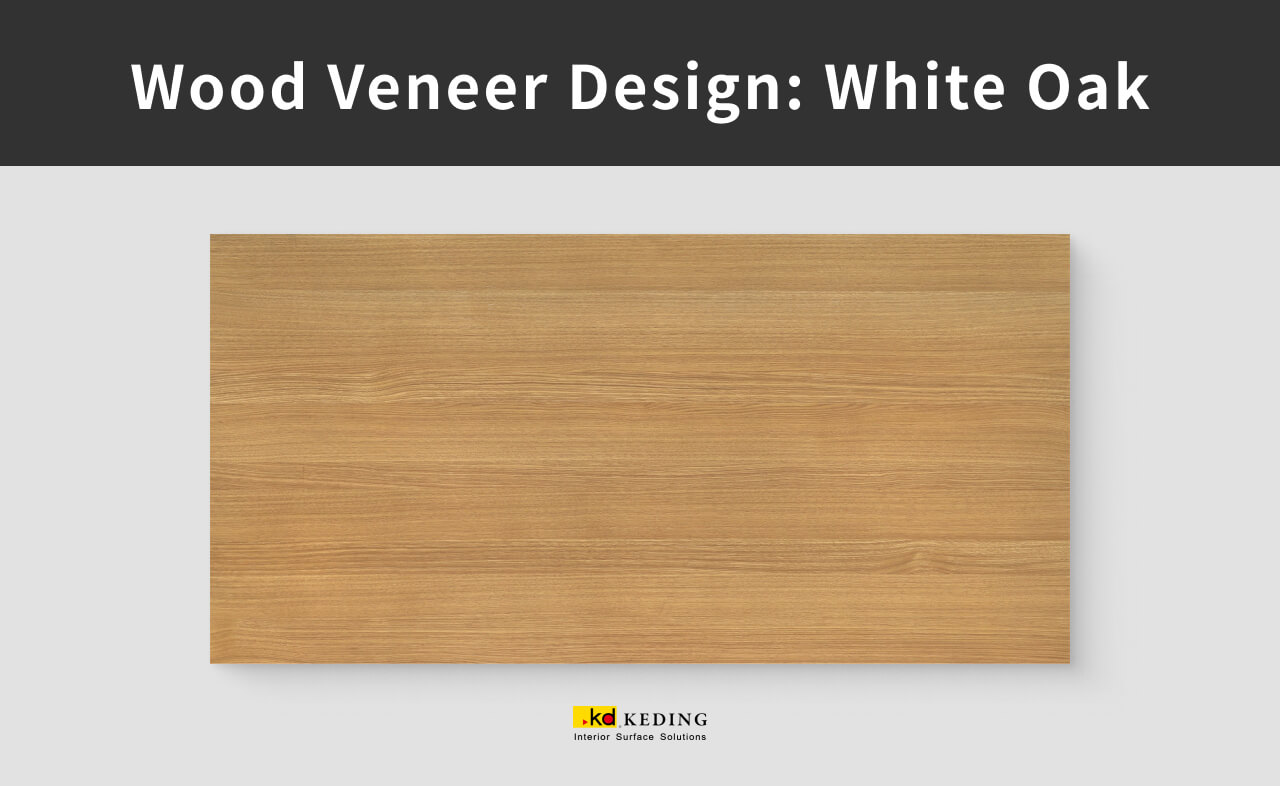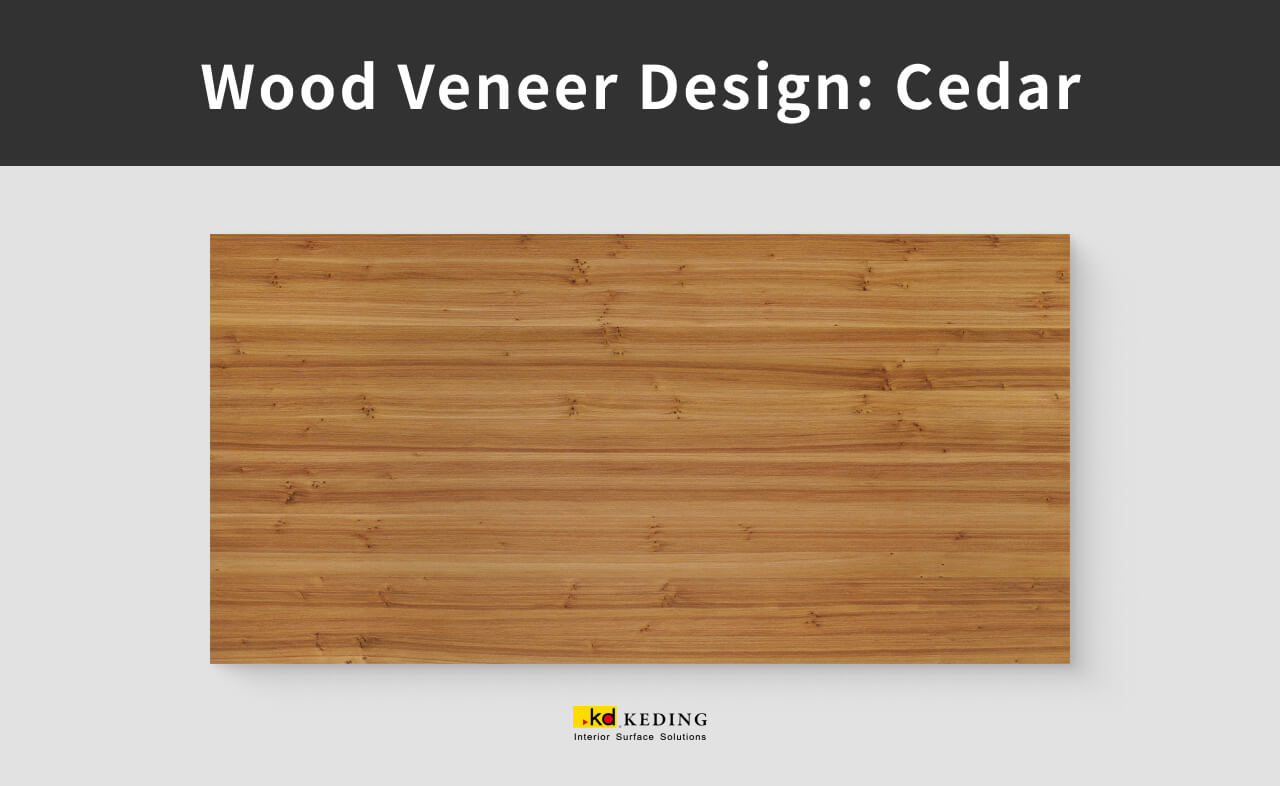1. What is Wood Veneer: Meaning
Wood veneer is a thin slice of peeled wood, commonly used to cover surfaces like furniture and cabinetry to enhance appearances and provide a natural wood finish. Veneers can be created using various methods, such as cutting on a band saw, slicing paper-thin with a sharp knife, or peeling from a log using a veneer lathe, then flattened and glued onto a substrate to create other products, such as wood on wood veneer or wooden veneer.
One common practice involves applying veneer to panels, like plywood. This process entails bonding thin sheets of wood together to form sturdy panels. These panels often boast decorative wood veneers on their outer layers, adding a touch of elegance to their appearance. Our KD Panels are examples of this concept, marrying functionality with aesthetics seamlessly.
2. Pros and Cons of Wood Veneer
Wood veneers offer numerous benefits compared to traditional hardwood lumber, but it does have some drawbacks at the same time. Let’s look at the advantages first:
Pros:
Natural Beauty: Wood veneer offers the natural, aesthetic appeal of real wood, enhancing the visual warmth and authenticity of furniture and surfaces. Even within a single tree log, each layer exhibits its characteristics. These unique natural grain patterns and textures add depth and character to any space.
Versatility: It can be applied to various substrates, expanding design possibilities and allowing for intricate patterns and unique finishes. This versatility enables designers to achieve a wide range of aesthetic effects, from traditional to contemporary. Additionally, the flexibility of the veneer allows for application on surfaces that would be challenging with solid wood.
Cost-Effective: Compared to solid wood, veneer is often more affordable while still providing the look and feel of genuine wood. This cost-effectiveness makes wood veneer an attractive option for budget-conscious projects without compromising on quality.
Eco-Friendly: Wood veneer stands out as an environmentally friendly option by maximizing the utilization of natural resources. Veneer significantly reduces waste and lessens the need for solid wood, thereby fostering sustainable forestry practices. Also, once it reaches the end of its lifecycle, wood veneers can be crushed and repurposed as wood waste, commonly used in the production of particle boards and other decorative materials.
Still, wood veneer can only partially replace solid wood as it has some drawbacks.
Cons:
Susceptible to Water Damage: Without proper sealing, wood veneers can be damaged by prolonged exposure to moisture, compromising their integrity. Extended exposure to water on the cabinet with a wood veneer surface can result in peeling or bubbling.
Require Maintenance: Veneer wood demands consistent maintenance to preserve its appearance and durability. It’s prone to moisture damage and susceptibility to insect infestation compared to its solid counterpart as it lacks the natural resilience of real wood.
Difficult Repair Work: Unlike solid wood, damaged wood veneer cannot be easily repaired, as its thin surface is not conducive to sanding or restoration. Once removed, then the entire layer of wood would be removed as well.
Formation of Cracks: Due to differences in expansion rates between veneer and underlying materials like plywood, wood veneer may develop cracks, chips, or even peels over time without proper care or installation, detracting from its aesthetic appeal and structural integrity.
3. What are the Best Veneers: How to Select
When selecting and buying wood veneer, several factors come into play to ensure you choose the most suitable option for your project.
Veneer Grade
Consider the grade of the veneer sheets, ranging from “AA” to “C.” The highest AA quality with near-perfection, to C, offering a more economical option with unpredictable color and open defects. AA veneers are rare, while A grades maintain an excellent appearance. Grade B showcases minor flaws but retains natural characteristics, suitable for various applications. Choose the grade that best suits your project’s aesthetic and budget.
Applications
Consider where the veneer will be used. Premium veneers are ideal for high-visibility areas like living rooms, doors, and furniture, while areas with high humidity, such as kitchens, bathrooms, and outdoors, require veneers with additional high water-resistant features to ensure longer uses.
Patterns
Assess your existing decor and ambiance. Choose from various wood grains and finishes to complement your interior style, whether it is modern, traditional, or country style, ensuring a perfect match for any design aesthetic. With a variety of patterns and collections available, KD Panels seamlessly enhances your projects with sophistication and style.
Lighting Conditions
Take into account natural and artificial lighting in the room. Dark veneers create a cozy feel, while light ones enhance brightness. Assess the light’s direction and intensity to pinpoint the ideal shade for your veneer, ensuring a harmonious blend with your space’s lighting dynamics.
Veneer Cut
Select the appropriate size based on your design requirements and applications, including doors, countertops, standard cabinets, and other variants. Different uses require specific sizes, so define your design and pattern requirements to make the right choice.
4. Types of Wood Veneer
Design
Real wood veneer encompasses a wide range of natural wood species, each with its own unique characteristics and beauty. From oak and maple to cherry and mahogany, these veneers offer endless possibilities for customization and design flexibility. Let’s look at some common wood grain designs:
Walnut Veneer
Walnut veneer features rich, warm tones and prominent grain patterns, adding a touch of elegance and luxury to any space. It is prized for its natural beauty and versatility, suitable for both traditional and modern design schemes.
Black Wood Veneer
Black wood veneer exudes sophistication and style with its deep, ebony hue and sleek finish. It offers a bold and dramatic aesthetic, perfect for creating contrast and visual interest in interior design.
White Oak Veneer
White oak veneer is renowned for its distinctive grain patterns and light to medium brown coloration. It possesses a timeless appeal and natural elegance, making it a popular choice for both traditional and contemporary interiors.
Cedar Veneer
Cedar veneer showcases a warm, reddish-brown tone with prominent grain patterns and natural variations. It emits a rustic charm and cozy atmosphere, reminiscent of traditional cabin interiors.
Manufacturing Parts
Natural Wood Veneer
Natural wood veneer is created by slicing or peeling thin sheets from solid wood logs or large wooden blocks. This method retains the wood’s inherent beauty and unique features, such as grain patterns and color diversities, since every tree is unique, even sliced from the same species.
Engineered Wood Veneer
Engineered wood veneers, also known as reconstituted wood veneers, are made by slicing artificial wood veneers into small sheets. These veneers undergo various manufacturing processes to achieve a natural wood appearance or even replicate the appearance of rare woods. Each sheet of engineered wood is unique in color and grain and can be produced in large quantities for consistency and versatility.
Backed Wood Veneer
A backed wood veneer enhances the strength and versatility of wood veneer by adding another material, such as paper, phenolic, cloth, or foil, to one side. This backing improves durability and flexibility, allowing the veneer to be applied to flat or curved surfaces without cracking. By matching the grains in the panels during manufacturing, backed veneer ensures a seamless and aesthetically pleasing finish.
Veneer Rolls
Veneer rolls consist of continuous sheets of wood veneer rolled onto spools for easy storage and transportation. They are commonly used in manufacturing processes where flexibility and efficiency are essential, such as veneering curved surfaces or applying veneer to large panels.
Laid-Up Veneer
Laid-up veneer refers to the process of assembling multiple layers of wood veneer to create thicker panels, dimensional shapes, or any other customized sizes and designs. However, the production process is time-consuming.
Wood on Wood Veneer
Wood on wood veneer, also known as 2-ply or wood-backed veneer, combines a decorative wood veneer face with a utility-grade wood backer applied in the opposite direction. This technique reduces the visibility of imperfections in the wood core by bonding two wood veneer faces with perpendicular grains. It offers a durable and aesthetically pleasing option for various furniture-making and interior design applications.
5. Keding Success Stories of Wood Veneer Panel
KD Panels offers premium decorative plywood overlaid with real wood veneer, prefinished with an exclusive UV coating for ultimate convenience. With various wood species and finishes, including dyed, wire brushed, and 3D textures, they cater to diverse design needs.
Certified low-formaldehyde and flame retardant, our wood veneer panels ensure safety and eco-friendliness. With enhanced durability, scratch resistance, and easy maintenance, they provide lasting beauty and functionality. Their zero-contamination feature minimizes mess during fabrication, while advanced molecular deconstruction reduces formaldehyde emissions, promoting a healthier living environment.
If you are looking for veneer boards or wood veneer for walls, explore our diverse KD panel collections, ideal for transforming environments with unique designs and ambiance. Whether it is the living room, bedroom, or any other interior space, KD Panels is the perfect choice.
Project: Yongxin Qianle / Laminate Used: K6181AN (Walnut)
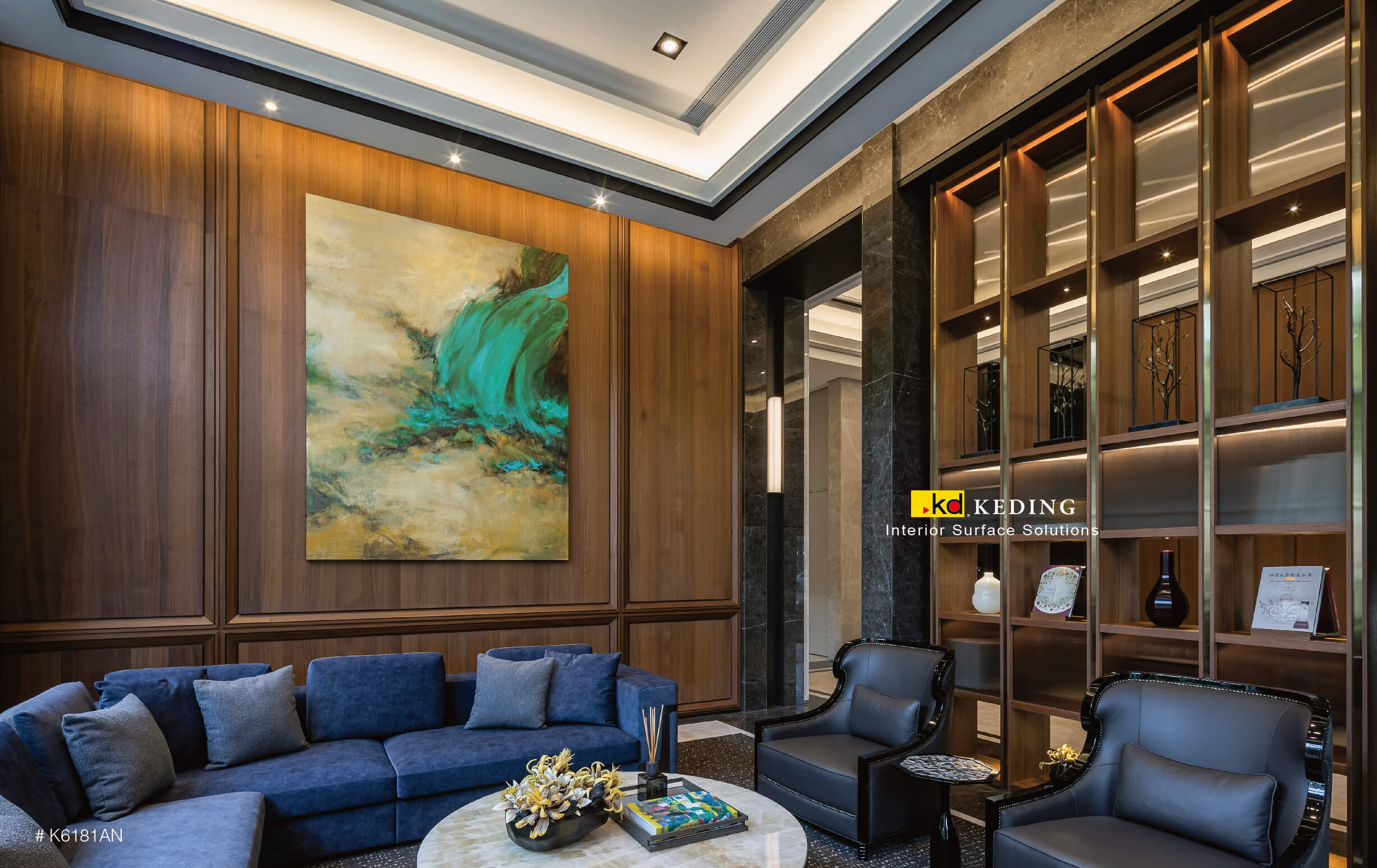
This elegant living room boasts beautiful walnut wood veneer panels, showcasing a warm and intricate grain that adds a touch of luxury to the space. The rich walnut panels provide a stunning backdrop, elevating the room’s sophisticated design. A large, colorful painting injects vibrancy, perfectly complementing the deep blue sofa and sleek leather chairs. The built-in walnut shelves, highlighted with gentle lighting, display decorative pieces, adding dimension and charm. The overall design combines high-end materials and tasteful decor to create a stylish and welcoming atmosphere.
Project: Yujing Jiangshan / Laminate Used: K6101RE (Black Wood)
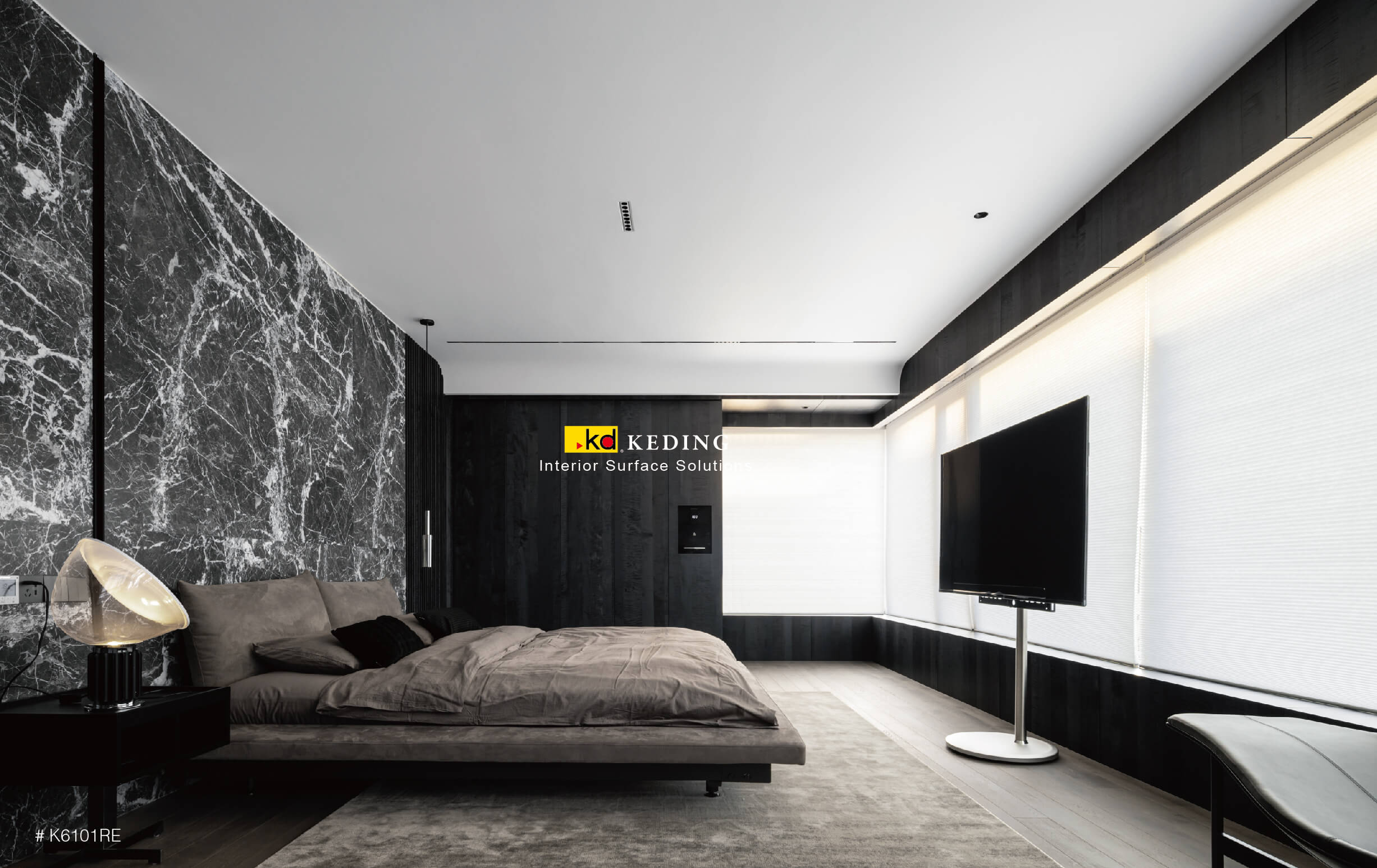
This modern bedroom showcases stunning black wood veneer panels with a deep, rich grain, forming an elegant and dramatic backdrop. The wood veneer’s luxurious texture and dark tones add sophistication and depth to the space. Adjacent to the panels is a striking black and white marble accent wall, enhancing the room’s opulent feel. Neutral furnishings and minimalist decor let the wood veneer shine, while large windows provide natural light, balancing the dark elements and creating an inviting atmosphere.
Project: Four Seasons Fun / Laminate Used: K6176AS / K6176ASB (Elm)
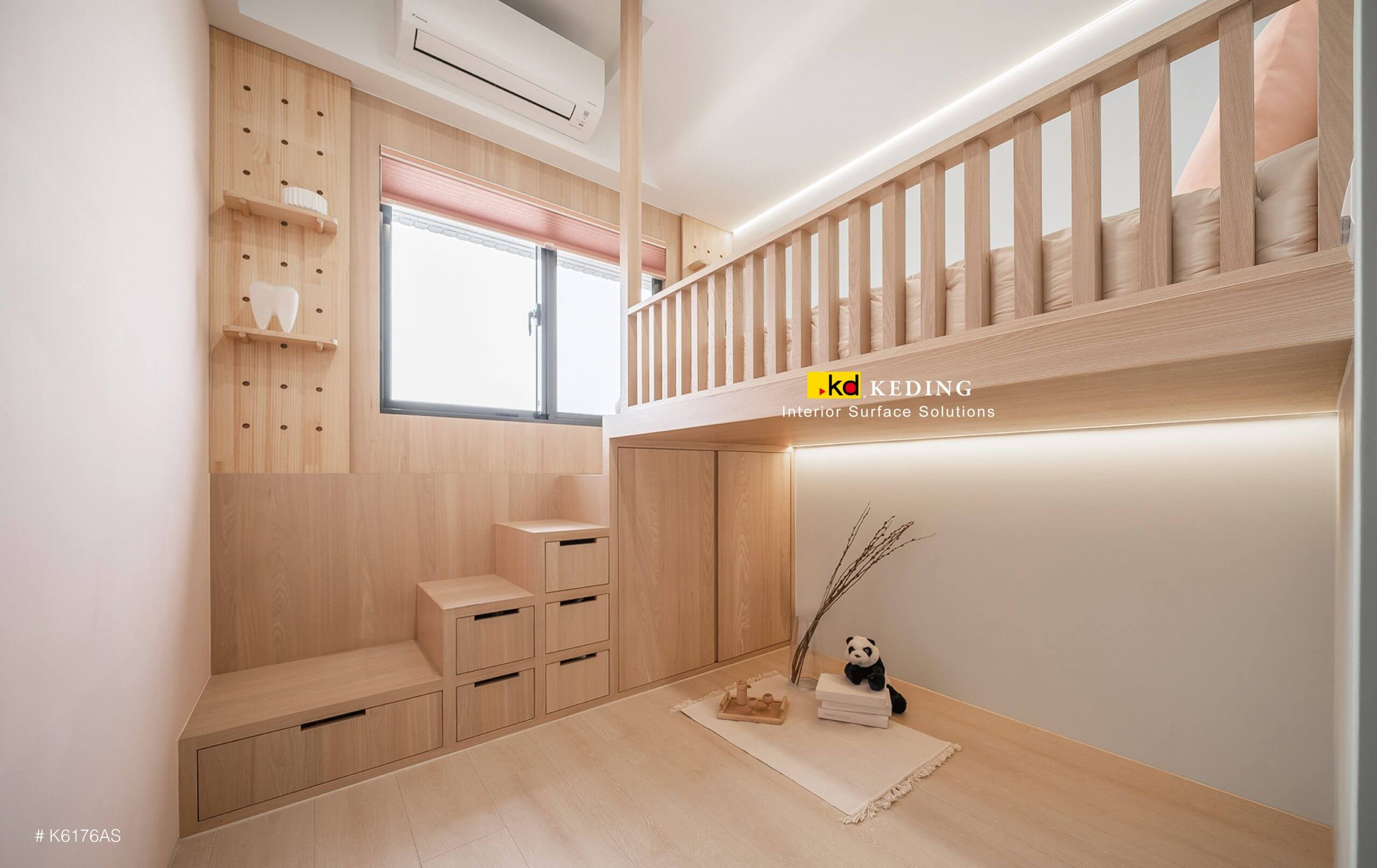
This cozy room features elm wood veneer panels with a light, natural grain that adds warmth and brightness. The elm wood panels are used throughout the space, from the loft bed structure to the built-in storage stairs, creating a cohesive and inviting atmosphere. The light wood grain of the veneer brings a touch of nature indoors, complemented by minimalist decor and soft lighting. The overall design is functional and stylish, perfect for a serene and comfortable living space.
6. Keding – Your Best Wood Veneer Panels Supplier in Singapore
Experience the superiority of KD Panels and ECO⁺ Laminates, adorned with real wood veneer sheets, revolutionizing traditional materials with their distinct advantages. Prioritizing eco-friendly, non-toxic, and health-conscious materials, our panels overlaid with wood veneer guarantee unmatched quality and innovation for every project.
Contact us, the top supplier of wood veneer panels in Singapore, today to enhance your spaces with exceptional products. Explore our timber veneer panel collections and unleash your design potential or click below to sign up for our online consulting to find the perfect solution for your interior design needs.
Relative Reads
>> Laminates for Kitchen Cabinets: Types, Benefits & Design Ideas – Keding
>> Why Use Laminates on Walls & Design Ideas for Wall Laminates – Keding
>> What is High-Pressure Laminates (HPL): Benefits & Applications – Keding
>> What is Melamine Board vs Plywood vs MDF: Benefits & Uses – Keding
